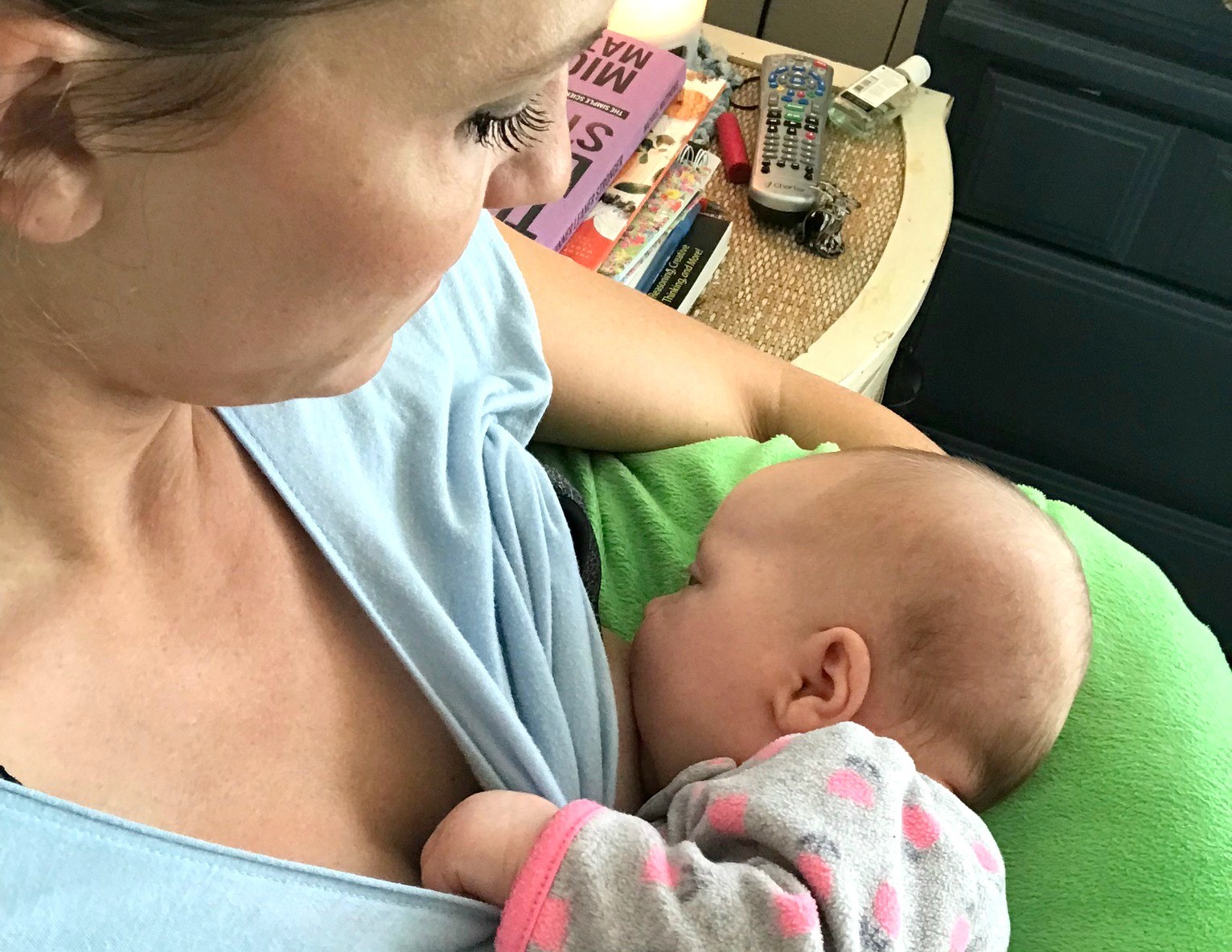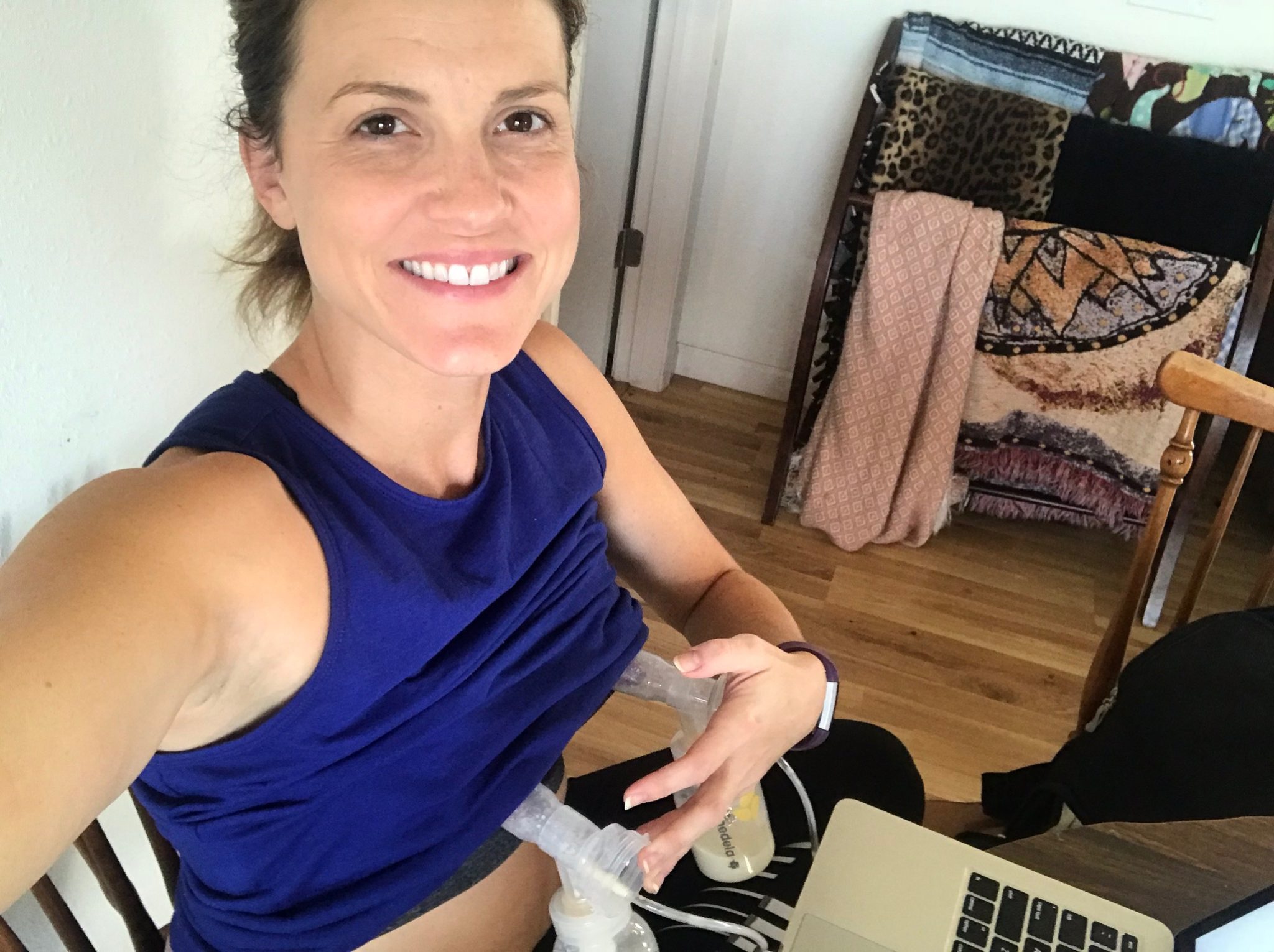Mommyhood
Breastfeeding Your Newborn – Surviving and Thriving
Breastfeeding.
Such a beautiful and important venture to a new mom. Before having a baby many moms plan to breastfeed. However once the reality of a newborn sets in, breastfeeding can become a challenge in more than one way. Unfortunately this can lead to mom deciding to quit breastfeeding before it becomes an enjoyable bonding experience between her and baby.
Bennies of Breastmilk
Breastmilk provides antibodies to your baby that help create a strong immune system which will help her form a solid gut barrier – critical for immune health the prevention of autoimmune disease.
Breastfeeding your baby also provides protection against viruses and harmful bacteria.
Breastfed babies are less likely to develop asthma, allergies, and ear infections.
Breast milk is free.
Moms who breastfeed burn an extra 20 calories per ounce of breastmilk produced. This can easily add up to 500 calories a day, helping mama lose the baby weight!
All this said I realize not every mom is able to breastfeed. That is okay. I do not judge moms who choose to formula feed. I do, however, wish any mom who wants to breastfeed her baby great success so I am sharing tips from my own experience having breastfed four babies. If you feel like breastfeeding is a challenge right now I hope when you read this you find comfort in the fact that other moms face the same hurdles you are trying to get over now.
You can get through this and not only survive breastfeeding, but thrive during the months you breastfeed your baby. The benefits to baby are endless, and the bond between you and her is priceless. You are sharing the most important nutrient with your baby when you breastfeed. Keep at it mama – it will become easy peasy in no time!
The Unknown
When my firstborn arrived in the world the nurse set her on my chest and she snuggled right into my neck, sticky and warm. It was the best feeling in the whole world. Shortly after that she started to breastfeed and latched on like a champ. I felt like such a super mom, having labored for 26 hours, pushed for 3 and a half hours, delivering a 7 lb. 12oz. baby girl (with a ginormous head) into the world. Now, this tiny little human already knew how to eat. It was amazing.
After the initial few breastfeeding sessions in the hospital the bliss wore off. This little girl was up every hour or two, everything was overwhelming to me, and the exhaustion hit like I got the crap kicked out of me for three days straight.
This feeling of exhaustion was not just due to not knowing what to expect with a newborn, this reoccured with all four of my deliveries, to differing extents. Trying to breastfeed when you are exhausted is like trying to play darts when you are hammered.

Mama Needs Support
The morning after I had my daughter I was struggling to get her to latch properly and the nurses were not in the room to help me. It was just my husband and I in the room. After several attempts with no success I threw my head back and cried. I had no idea getting my baby to latch would be so difficult.
At that point my husband came over to us, grabbed my boob and shoved it right into my daughters mouth. She began to eat.
I was shocked.
And relieved.
He and I had taken a breastfeeding class with our local hospital. Actually I thought he was one of the embarrassing dads in the room when he raised his hand and said “so when can she drink and breastfeed? How does that work?” Oh lord.
What I didn’t realize at the time was that while I was busy taking notes on all the important things the instructor said, my husband was the one who would actually retain it when it came time to use it. We learned so much valuable information in this class but for some reason in that moment of feeding my daughter on my own I couldn’t recall one thing.
Childbirth Education
This is one of the reasons I became a Childbirth Educator. I realized that the initial struggle was only one of the hurdles I would have to overcome as a breastfeeding mom and once I did overcome each subsequent hurdle, I wanted to help other moms know they could do it too.
I HIGHLY recommend taking Childbirth Education classes, furthermore with the support person who is going to be with you at the hospital and at home. Multiple sets of ears are always more efficient than one, especially when much of the information is new to you. In person classes are really great because you meet other couples who are having babies right around the same time you are having a baby. Seeing the social connections formed during class is one of my favorite parts about teaching.
If you do not have time to go to classes, read up on childbirth, pregnancy, and breastfeeding. Also, check out your local library for DVD’s you can watch. Some DVD’s even have sessions to mimic an in person class. You and your partner can watch these at home on your own time.
Cue In Your Partner
Whether your support person is your spouse, boyfriend, girlfriend, mom, sister, or friend, cue them in on what is going on with your thoughts about breastfeeding and any struggles that come with it. The weeks following childbirth are often very challenging and can leave a mom feeling alone.
A difficult time breastfeeding often turns into a decision to switch to formula feeding before an infant turns 6 weeks old. This is because before this time moms are faced with nipple pain, scabbing, mastitis, thrush, extreme fatigue, milk supply issues, and/or postpartum blues. I personally have had every single one of these.
I can tell you that without my partner I would have struggled more than I already did. You have to have a good support person. If you are a single mom or have a partner who does not provide the support you need, reach out to a lactation consultant. Often, your local hospital will provide one for you free of charge. You can also look one up online by searching “lactation consultant near me”. Additionally, Kelly Mom is a great resource for all things breastfeeding.
Milk Supply
One of the most frequent things I hear from new moms is “my milk supply did not come in”. There are a few things that are key to getting your milk to come in and keep on flowing.
Drink up
Hydration is KEY to making milk. When you wake up in the morning, drink a huge glass of water. Each time you breastfeed drink a huge glass of water. This is also where your support person can come in. Ask them to get you fresh water each time your breastfeed, and don’t feel bad about it. They are there to help!
Massage your breasts
When your baby latches you can help out your supply by massaging from the base of your breast towards your nipple. Do this around your entire breast to reach all the different milk ducts. This will help stimulate milk production and let down. You can also do this while pumping.
Switch up positions
Different breastfeeding positions drain different ducts. Familiarize yourself with various feeding positions . This is especially important in the beginning because your baby has a little mouth and a stomach the size of a marble, yet when your milk comes in your breasts are like “WOWZA”. Improper draining of the milk ducts can lead to mastitis. Ouch!
Make sure your baby is latched properly every time
Read this resource on proper latching right away and make sure you do not get lazy about this! In the beginning you may have to pull baby off and on the breast multiple times before you get a proper latch.I know it can be so defeating, however improper latch leads to serious nipple pain fast! I had this with my fourth pregnancy and developed scabbing on my nipple. I knew better than to allow this to happen, however I was exhausted and really out of it due to the postpartum blues and having a cesarean section. Plus the baby had a smaller mouth than my other babies so it was harder to get her upper lip over my nipple.
Once I really focused on making sure she was latching well, the pain went away and now she breastfeeds like a champ!
If you do get sore nipples, try these nipple shells . The nurse at the hospital gave me these and I used them until the pain went away. They were a lifesaver.
Feed on demand
Do not try to start a schedule with baby in the first 4-6 week of her life. Feed the baby when she shows you cues such as rooting and sticking her tongue out. It may seem like all you do is breastfeed, which is true. I promise you, within 4-6 weeks things will taper out and become much, much easier.
Mastitis and Thrush
Two sure fire ways to take your maternity leave from “this is so wonderful” to “holy shit this is the worst thing I have ever experienced”.
Mastitis – Is an infection that develops from a clogged milk duct. Symptoms include:
- Breast tenderness or warmth to the touch
- Breast swelling
- Thickening of breast tissue, or a breast lump
- Pain or a burning sensation continuously or while breast-feeding
- Skin redness, often in a wedge-shaped pattern
- Generally feeling ill
- Fever of 101 F (38.3 C) or greater
I developed mastitis with my third baby. Weird since you would think I would know what I was doing by then, but each baby is so different. You never know what to expect. If you have any of these symptoms contact your doctor right away!
Mastitis comes on very quickly. When I took my second son (third baby) to his 2 week check-up I felt great but by the time I got home I felt feverish, had pinkish red streaks on my breast and an hour later felt like I had a very severe flu. This made it near impossible to feel like taking care of a newborn. However, with antibiotic treatment and my support person (again) we made it through within a few days.
During this time I used dangle feeding to help empty all the milk ducts. To dangle feed you kneel over the baby so your breast hangs into her mouth. This position allows gravity aids in draining the duct. This also works for plugged milk ducts. Sounds weird, I know, but it works well and quickly!
You can read more about mastitis here.
Thrush – is a fungal infection caused by an overgrowth of yeast which can pass back and forth between mom and baby. Thrush causes severe pain when breastfeeding baby. It is a pain I cannot describe. I developed thrush shortly after I had mastitis with my third baby. You can read all about thrush here. My biggest advice is to eat a low sugar diet (sugar feeds yeast) and keep your nipples clean and dry, as a moist environment encourages growth of the fungus. I likely got thrush from not doing the above suggestions in combination with the antibiotics for mastitis.
Never will I forget when I had mastitis and thrust at the same time. There I was, dangle feeding the baby and just bawling because of the pain, exhaustion, and the disappointment. Breastfeeding was NOT what I had envisioned it to be with this baby. My husband reassured me of what a super mom I was and told me I was doing a great job. This small comment meant a lot to me, another reason to make sure you have that support person.
If you don’t have a support person read this affirmation. Write it down on multiple post it notes and stick them around your house.
Breastfeeding is hard. I am not alone in this. I am a super mom. I WILL get through this time. I am proud of myself. I am strong. My baby and I will get through this together.
Growth Spurts & Cluster Feeds
So you have this breastfeeding thing down. Sweet! It’s been a few weeks and you feel like you are actually figuring out a little bit of a routine with your baby. Out of the blue baby starts to get more fussy and seems to want to eat non-stop. This is a growth spurt.
Growth spurts can happen anytime, however typically they occur around one week, 2-3 weeks, 4-6 weeks, 3 months, 4 months, and 6 months. This is time when your baby is growing either physically or mentally so she needs more nutrition to do so.
With feeding on demand you can adapt to these changes by cluster feeding your baby. Recognize these growth spurts and allow your baby to nurse when she needs to.
The good news? Typically these spurts only last a few days. Oftentimes you will notice an increase in weight after a few days of cluster feeding. It is a reassuring way to know your baby is healthy and you are doing a great job!
During this time be sure to get good burps out of your baby after she eats from each breast. Try to do this every time anyway, as that will help reduce gas (allowing her to sleep better), but especially during cluster feeds, moving the gas is important. Also, don’t be surprised if she pukes up what seems like a ton of milk during this time. It’s okay.
Pumping
Every mom (and baby) is different so you have to do what is best for baby. I know moms who could not get baby to latch at all so they had to exclusively pump (bless their hearts – what a ton of work). I had to pump for my second baby right away because he went straight to the NICU after he was born and was unable to nurse until he was a few weeks old. Some moms may have to go to work much earlier than others, therefore need to pump earlier.
However, aside from unique circumstances (such as those above) if you and baby are breastfeeding well, I recommend waiting until baby is a month old before starting to pump. Nursing is a supply and demand relationship. Adding a pumping session too soon can not only throw things off with breastfeeding a bit, but it also adds more “To-Do’s” to your list which you do not need.
I started pumping with baby number four at 6 weeks by adding in one pumping session a day.

Let’s Recap
So to recap some of my tips on how you can not only survive through those early breastfeeding days but actually help you and your baby thrive and enjoy the days, here is what you want to focus on:
- Have a great support system – Whether it be your partner, a parent, a friend, or a doula, find someone who supports you well and bring them with to a Breastfeeding class. This will be your support person during and after birth so this is crucial to your healing.
- Cue in your partner – Make sure you let your partner know how they can help you. Unless you are a mom, you cannot understand how crucial good support is. Your partner can not read your mind. Let them know what you need. They will appreciate the guidance in how to support you.
- Learn all about milk supply – Follow my tips above to keep your milk supply up. Remember it is a supply and demand relationship. The more you nurse or pump, the more milk you will make.
- Mastitis and Thrush – Avoid these awful conditions by learning all about them, switching up breastfeeding positions frequently, and keeping your nipples clean and dry.
- Growth Spurts and Cluster Feeds – Fussy baby? Remember cluster feeds happen during growth spurts. Be ready to take a calm step back from your daily To-Do’s and nurse baby whenever she is hungry.
- Pumping – Unless you have other reasons for pumping, such as those I listed above, try to avoid the introduction of pumping into your routine until baby is 4 weeks old.
I hope reading this will provide you some comfort in knowing that if you face any of the issues I mentioned above, it does not mean breastfeeding is unsuccessful or that your body is not good at it. It is just part of the chaos of having a new baby in life who will forever throw you for a loop. Mommyhood at it’s finest.
Ultimately if you can hang in there, breastfeeding will become a rewarding, personal relationship between you and your baby. It is a bond like no other.



